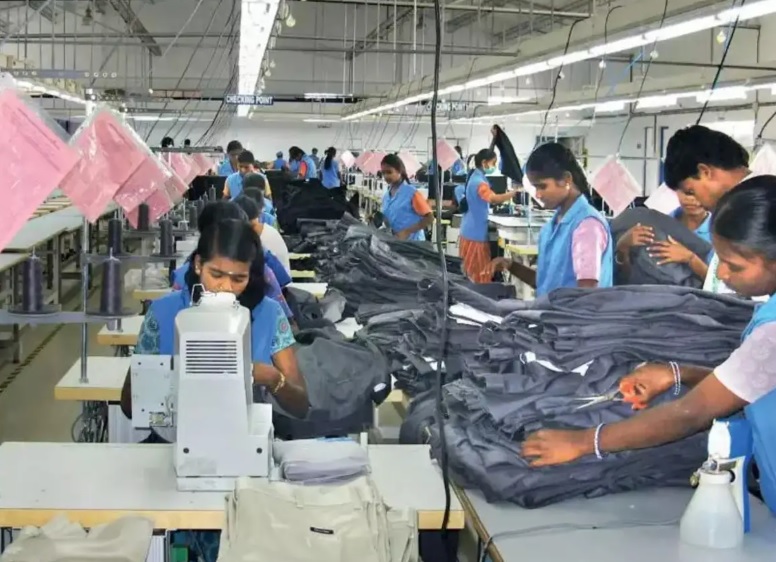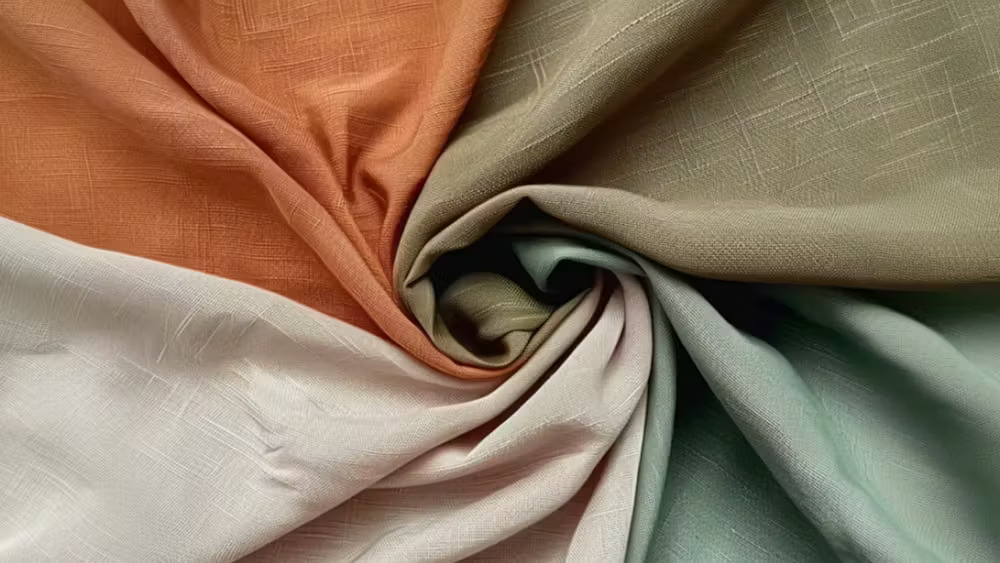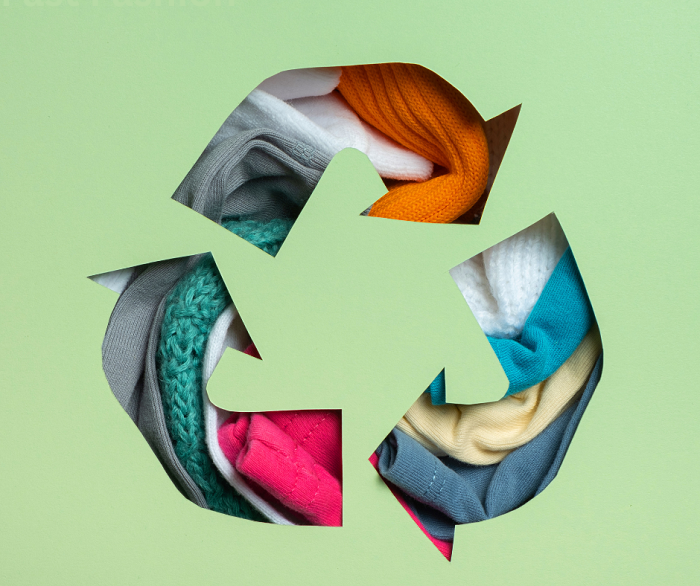FW
"The Society of Dyers and Colourists (SDC) organized a half-day seminar ‘Clean and Green Garment Processing’ in Mumbai. It was aimed at promoting green practices in the garmenting industry throgh innovative methods and efficient use of machinery, equipments nd labour. The event witnessed attracted many big names from the garment processing and fashion industry."

The Society of Dyers and Colourists (SDC) organized a half-day seminar ‘Clean and Green Garment Processing’ in Mumbai. It was aimed at promoting green practices in the garmenting industry through innovative methods and efficient use of machinery, equipments and labour. The event witnessed attracted many big names from the garment processing and fashion industry.

In his keynote address of Harish Punjabi, Director (Marketing), Trinity Services Bd, stressed not to taking the planet for granted use resources carelessly. “This is an attempt towards the preservation of the environment since climate changes are acute, unpredictable, and posing big challenges to everybody on this earth.” He emphasized everything has undergone a change for example, there is less rainfall these days, summers are hotter, pollution is high. “The entire planet is facing a threat and we need to stop procrastinating and work for the improvement of the environment,” he said adding, “Today we are addressing the way to use resources, reduce affluent and bring efficiency and sustainability in the entire spectrum of things we are involved in. We need to find solutions and bring innovation in our working methods.” He said the garment industry is keen to address issues concerning climate, inspired by the old-fashioned and harmful practices. However, these initiatives should not be limited to any industry or corporate but be taken seriously by every industry and individual to promote clean and green environment.
The seminar was the first-of-its-kind conducted by SDC in the garment processing industry. Also present on the occasion were: Ravichandran, Director (Technical and Business Development) Atlantic Chemicals, Jaydeep Umalkar, Marketing Manager, SF Dyes, Sidharth Wilson from Spykar Jeans and Aniket Satam , Proprietor, Brand Aniket, among others.
V R Sai Ganesh, Secretary SDC EC and General Manager, Atul Limited, while addressing the audience said: “The efforts to encourage clean and green practices by SDC and garment processing industry are commendable. Having a galaxy of industry stalwarts on one platform discussing the need to bring transformation in the working methods established in the Industry is heartening. Garmenting industry is huge and has a huge impact on nature owing to its use of natural and artificial resources. The need of the hour is conscious utilisation of goods and machinery. The use of organic products can help bring sustainability in the environment.
Ganesh pointed out that water usage is high in garment processing industry and its effective use can help to save the environment. The industry needs to adopt innovative methods for water treatment and limited disposal of affluent. Recycling is another area where the industry needs to focus on.
Also discussed at the seminar were topics like costing and how to make costing of the product viable to manufacturer and end users while accommodating green practices.
Keeping the buying and selling potential of the country’s textile and garments industry in view, Pakistan Readymade Garments Manufacturers and Exporters Association (PRGMEA) is holding the 15th Textile Asia 2016 International Textile and Garment Machinery Trade Fair from March 9-11, 2016 in Karachi.
According to PRGMEA, the trade fair will have more than 550 international brands displaying their products in over 700 booths, and over 500 foreign delegates mainly from Austria, China, Czech Republic, France, Germany, India, Italy, Korea, Taiwan, Turkey, UK and US are likely to attend the event.
Interaction of local stakeholders with the global tycoons would enable them to further improve their products and also bring them in conformity with the current trends and market demand in various regions of the world.
It was written in the publications that to take advantage of opportunities from the Trans-Pacific Partnership (TPP), the world’s biggest shoe processor, Pou Chen (Taiwan) has been gradually shifting its production bases to Vietnam since 2012.
Similarly, the textile industry also witnessed the landing of large textile corporations, including the competitor of Pou Chen in Taiwan, Feng Tay and the major manufacturers in the world such as Hanesbrands (US), Onewoo and Panko (Korea).
In fact, moving factories to Vietnam where there is cheap labour to wait for the opportunities given by the TPP is the way that many foreign companies are pursuing in order to use Vietnam as a springboard to enter major markets in the TPP.
Some experts are afraid that this phenomenon will affect profit from Vietnam’s key export commodities. Others felt Vietnam should have appropriate policies to ‘borrow’ this source of capital to develop the local economy along with strict commitments on technology transfer.
According to the Vietnam’s Ministry of Industry and Trade spokesperson, Deputy Minister Do Thang Hai the increase of foreign investment in this way benefited Vietnam so far. He said exports of the foreign-invested sector were a bright spot in the overall economic picture of Vietnam last year. The part of this sector in Vietnam’s total export revenue has increased in recent years, from US$34 billion (representing 49.4 per cent of total national exports) in 2010 to $110.59 billion (accounting for 68.2 per cent) in 2015.
Celebrating its 110th anniversary this year Japanese sports brand Mizuno, continues to refuse to help 346 Indonesian workers who were unfairly dismissed after a strike in 2012. Some of the women, who have been working for years on Mizuno sportswear, lost their homes and families after the company producing for Mizuno sacked them. Adidas, another buyer at the factory at the time, also refuses to support the workers.
The labour issue started in July 2012 when a group of 1300 mostly female workers was fired from the PT Panarub Dwikarya Benoa factory (PDK) after a strike demanding the right to freedom of association and a back payment of the legal minimum wage. The women also suffered from verbal and physical violence. Early 2012 workers founded the union SBGTS-GSBI. In July 2012 factory management unilaterally decided to postpone negotiations regarding wage violations, while the workers started a spontaneous protest, followed by a strike which was joined by 2000 workers. After five days of strike, the factory management dismissed the workers.
Out of the 1300 dismissed workers, 346 are still fighting for fair severance payment. The other workers agreed to be paid off with a meager ransom, due to the pressure of the factory management and the hardship of lack of income. The remaining workers recently considerably lowered their financial demands in order to be able to reach a settlement and close the case.
Bangladesh has made the use of jute sacks mandatory in packaging different agricultural products including rice.
So mills in Bangladesh now need to produce an additional 1.5 million bales of raw jute annually. The country currently produces about 7 million bales a year.
Under the law, all kinds of packaging, particularly for rice, wheat, sugar and fertiliser, must be done with the use of jute sacks. Most rice millers are now using jute sacks in packaging rice and need to be supplied around 360 million jute sacks a year.
The country sees a return to the golden era of the fiber if the law can be implemented successfully. For violation, the law provides punishment of a maximum imprisonment for a year, or a fine, or both, for using non-degradable synthetics to package commodities.
Despite initial unwillingness, most rice millers have now started using jute sacks.
Bangladesh is seeing new export opportunities. European Union members and some other countries have recently imposed restrictions on the use of plastic and other synthetic products. According to strict new targets each country has to reduce plastic bag use by 80 per cent before 2019.
Bangladesh hopes to take this chance and increase jute product supply to these countries and raise its export volumes.
Textile firm Filatex India has commenced commercial production of polyester fully drawn yarns at its plant in Dahej, Gujarat.
The commercial production is for manufacture of 100 million tons per day of polyester fully drawn yarn. This will lead to lower per ton capital cost which in turn will put the company to a recurring advantage by way of lower depreciation and interest. Also, other fixed expenses like staff cost and factory overheads would also be spread over bigger production volumes leading to improvement in profitability.
The total capital expenditure for implementing the expansion program is about Rs 100 crores.
Filatex, established in 1995, is also in the process of installing about 40 texturising machines at the plant. Two texturising machines have been installed. The remaining machines would be installed in phases till September.
The company is involved in the manufacture of various varieties of synthetic manmade fibers like polyester filament yarn, poly propylene yarn, textured yarn, micro denier yarn, polypropylene yarn, mono filament yarn. It is considered a pioneer in the manufacture of mono filament yarn in the Indian market.
Filatex has also diversified itself into special polyester filament yarns like micro denier polyester filament yarn.
www.filatex.com/
Bangladesh’s export earnings rose 10.41 per cent in January 2016. In the first eight months (July to February) of the 2015-16 fiscal year, export earnings rose by around 9 per cent, over 2.35 per cent more than the target.The country hopes export growth will exceed 10 per cent in the 2015-16 financial year.
Bangladesh exported goods worth over 22.12 billion dollars in the July to February period. The garment sector contributed over 18.12 billion dollars to earnings, accounting for 82 per cent of total exports. The sector is a prime mover of the economy.
In February this year, exports were over 2.85 billion dollars, five per cent more than the target. The amount was over 2.51 billion dollars in February 2015.
The growth in exports has given the economy a firm base. Incentives are being given for the growth of exports while exporters are exporting goods to new markets.
The heartening news is that economies of Bangladesh’s markets in the US and Europe have also turned around. Given the current stability the country hopes to achieve the 50 billion dollar garment export target by 2021.
Bangladesh specializes in exporting high quality garments at cheap rates. So it’s optimistic exports will keep growing.
Cotton futures showed some recovery during the early part of the week but profit taking increased towards the latter half due to deepening concerns over slowing import demand from China.
China is likely to be the third largest cotton importer, behind Bangladesh and Vietnam. The country was the biggest importer globally a few years back. China is likely to import five million bales of cotton in the current season.
Net weekly export sales of upland cotton from USA fell by 10 per cent for the week ending February 4, comparing from the week before. The export volume however remains up by 22 per cent from the prior four-week average. Increases were reported for Turkey, Colombia, Vietnam, China, Bangladesh and Taiwan.
Though prices can remain weak in the coming days, worsening concerns over lower production and tightening of arrivals in spot market will be restricting the bearish movements in the near term. Plunging cotton prices have turned supportive for active buying in the spot market, which will be positive for the futures market as well.
India’s cotton production forecasts have been reduced 7.4 per cent against the previous year’s production. Cotton arrivals are lagging by almost 30 per cent compared to the previous year. The reason is that farmers are holding cotton in anticipation of higher prices.
This year China will aim at stimulating growth and encouraging restructuring of industries afflicted with overcapacity.
For the first time in two decades, China has adopted a range for its growth target rather than a specific number, giving itself more flexibility in a system where hitting stated goals remains politically important. Growth over the next five years is expected to average at least 6.5 per cent.
The country will address the issue of zombie enterprises proactively yet prudently by using measures such as mergers, reorganisations, debt restructuring and bankruptcy liquidations. Zombie enterprises are unproductive businesses kept alive by debt and subsidies.
About 10 million jobs would be generated in urban areas and unemployment would be kept below 4.5 per cent in cities. Among the job creation initiatives are railway construction and road building.
To leave room for more spending, the targeted budget deficit will be three per cent of gross domestic product this year, up from 2.3 per cent in 2015.
China also plans to raise military spending in 2016 by 7.6 per cent. This would be the slowest pace in six years, but still larger in percentage terms than the seven per cent increase for the overall budget, suggesting the military still gets an outsize share of government resources.
Brazilian cotton prices dropped during February while the downtrend was more intense in the last week of the month. Prices were pushed down due to higher supply and weak demand and as trading companies were quoting prices lower than those asked by cotton farmers.
Even though some producers remained firm in asking prices, others were waiting for prices to increase.
Cotton brokers and merchant were active, but the gap between asking and quoted prices hampered new trades, especially for the second fortnight of the month.
This in turn led to textile mills purchasing in small batches.
The monthly average was 1.66 per cent lower than in January 2016 but still 37.2 per cent higher than in February 2015.
Brazil is one of the world’s leading cotton producers. Thanks to various economic and technological interventions – such as targeted government support, the emergence of new cotton producing regions, and precision farming technologies – Brazil’s cotton production is thriving. The country is one of the world’s largest consumers of cotton fiber as well.
In Brazil, cotton is sown from February to March and harvested from September to December.
Farmers in Brazil have taken the lead in development and conservation of soil. For them conservation of soil is a long drawn system and not a one-time application.












